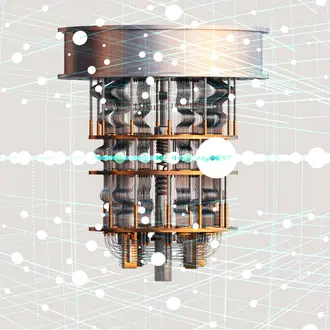Credit: Andrea Reiman / Unsplash.com
If your organization is looking to innovate more in 2019 (and who isn’t?), we have good news and bad for you.
The good news: The world is increasingly flat, to riff off the title of Thomas L. Friedman’s seminal 2005 book — meaning innovation isn’t confined to just Silicon Valley anymore.
“There are many places outside of Silicon Valley where innovation is happening — London, Tel Aviv, New York, Boston,” said Fiona Murray, associate dean for innovation, who presented research findings in a recent MIT Sloan Executive Education webinar. “We're also seeing this in Asia, across China in Beijing and Shanghai and Shenzhen, and, in Africa, in places like Lagos and Accra and Cape Town,” she said.
The bad news: The world isn’t wholly flat, or not yet anyway. Contrary to Friedman’s thesis that globalization would enable anything, anywhere, MIT Sloan research has determined that the world remains stubbornly spiky when it comes to innovation.
In fact, there are geographic hotspots, or “innovation ecosystems,” where ideas move more easily from inception to impact.“We discovered this by working with regional partners around the world through our global program called REAP [Regional Entrepreneurship Acceleration Program],” said webinar co-presenter Phil Budden, a senior lecturer specializing in innovation and entrepreneurship.
“Innovation is happening, but it's just not happening everywhere in the world in the way that we might've been led to believe by the Friedman book,” Budden said. “It's unfair, but the world of innovation is not flat.”In studying such world-class innovation ecosystems, researchers were able to gather insights about what drives such entrepreneurship to share with global business leaders trying to lead change in other places.
Key players
World-class innovation ecosystems have five key stakeholders. The traditional “triple helix” that has long driven innovation — university, government, and corporations — is now joined by two additional players: entrepreneurs and risk capital.“It's so important to have innovation-driven entrepreneurs involved. They're producing the companies of the future,” Budden explained. “You can't just have today's companies [in an ecosystem], you need to have those leaders who are going to produce future companies.”
Murray and Budden define the required “risk capital” more broadly than venture capital — with risk capital ranging from early-stage “friends, family, and fools” through to angel investors, venture capitalists, private equity, and even commercial lenders. “Not everybody has [access to] venture capitalists; it's important to realize that others can provide that financing for you,” Budden said.
Ivory tower, adieu
Murray and Budden urged corporations that might have adopted a more traditional, internal-facing research and development process in the past to instead take advantage of startups and entrepreneurs to help experiment and iterate for them.“As we know from our work with big organizations, both public and private, it can be quite difficult to test assumptions rapidly, particularly if your processes are designed to emphasize precision over speed,” Murray said.
In contrast, entrepreneurial startups are highly effective at iterating quickly. “What these startups tend to do very well is define, order, and test their assumptions through a series of what we call ‘innovation loops,’ Murray said. “So one of the benefits of going from a purely internal research and development process to working externally is that you can really rely on the universities and startups in an ecosystem to do that experimentation for you.” As corporate leaders begin to engage with innovation ecosystems, Murray and Budden said, they should be mindful of three common pitfalls:
- Fear of failure, which Budden calls “the F-word of innovation.” While no leader sets out to “fail,” adopting a more experimental approach to success can nurture greater innovation within hidebound organizations.
- A desire for immediate results. “It takes time to engage the ecosystem. It's a living organism. You can't just go in and expect immediate results; you need to proceed carefully,” Budden cautioned.
- Forgetting to close the loop. “Once you've had a successful innovation project, how do you reintegrate it back into the organization?” Budden asked. “You've been operating outside of business-as-usual. Now you need to bring that innovation back in without getting the corporate antibodies up.
Learn more
Two-day course: Innovation Ecosystems MIT Regional Entrepreneurship Acceleration Program



